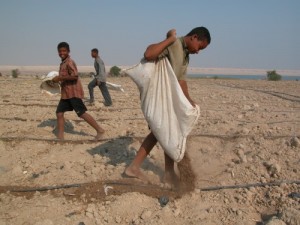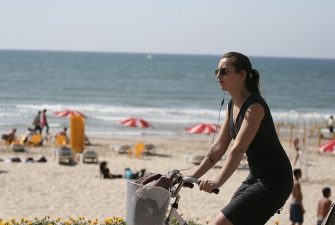A study released last week shows that more than one in five Israeli schoolchildren is overweight. According to Haaretz, the towns Nahariya (37%), Bat Yam (34%), Or Yehuda (32.6%), Tira (31.1%) and Kalansawa (31%) lead the list.
In the Hebrew edition of the same article, a health specialist chalks up the trend to the unsurprising factors of children who eat too much bad food, and who don’t move enough.
Shortly after reading this piece, I tuned into the Kunstlercast, a weekly Internet podcast on “the tragic comedy of suburban sprawl. By happy coincidence this week’s topic is obesity and suburbia. James Howard Kunstler cites a study released last month by the American Academy of Pediatrics that lays blame on the built environment for fattening children.
Suburban living is increasingly popular in Israel as well; read this book review or a post about malls in Beer Sheva for some background. Suburbia is also on the rise in Lebanon and on the West Bank.
The study, called “The Built Environment: Designing Communities to Promote Physical Activity in Children,” notes that in 1969, more than 40 percent of American children walked to school. However, due to “big-box schools” located at the edge of towns, today about 13% of kids make the daily hike. Even children who don’t live far from school are often driven by parents worried about traffic, crime and the weather. One solution to this has been a “walking school bus” made of troops of walking children supervised by adult chaperons.
The illustration above, from the study, also shows how much easier it is to walk a traditional community than a suburban one.
Beyond school construction, the study examines the opportunities children have for moving without noticing:
An important component of a healthy lifestyle is participationin activities for which exercise is not the primary goal. Thismight be a “purposeful walk”—an errand to buy groceriesor a trip to school. Such incidental physical activities (alsoknown as “utilitarian trips”) play an important role in energybalance and can be influenced by neighborhood design.
It ends on a quite revolutionary note of imploring pediatricians to ask their patients not only about how much they exercise, but about what opportunities their built environment offers for physical activity.
As Israel thinks about future development, I would recommend giving serious consideration to walkable communities. This may reverse the trend of children who grow fat because they are landscaped into sedentary lifestyles.
:: Haaretz
:: KunstlerCast
:: The Built Environment: Designing Communities to Promote Physical Activity in Children




One thought on “Are Suburbs Making Israeli Kids Fat?”
Comments are closed.